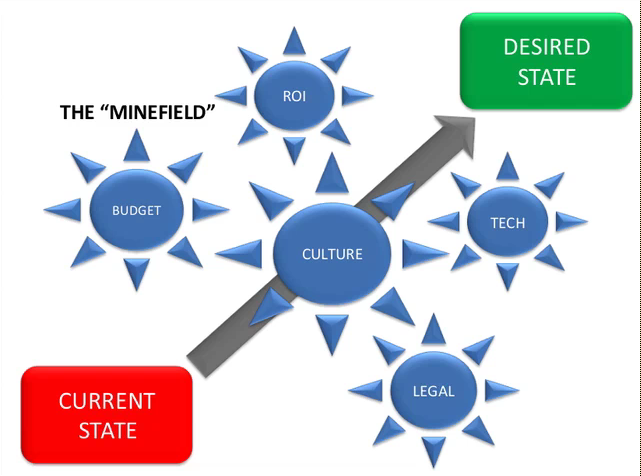The folks at Social Media Examiner are presently running the first edition of the Content Success Summit, a four weeks long smorgasbord of leading-edge webinars with industry experts such as Michael Stelzner, Ann Handley, Gini Dietrich, Amy Porterfield and many more.
After the first week, I thought I would share some learnings coming mostly from the keynote session given by Joe Pulizzi, founder of the Content Marketing Institute, as well as from the Mark W. Schaefer, author of Return on Influence and The Tao of Twitter.
HISTORY OF CONTENT MARKETING
While it may seem that content is a nascent marketing function, truth is people and brands have been using content to drive people towards action through compelling storytelling for decades, if not centuries. John Deere has been publishing its own magazine The Furrow for almost a century now, and you can think of Kraft and its What’s Cooking magazine among other examples of custom publishing.
BRANDS NOW HAVE DUAL MARKETING ROLES
One thing that now seems clear is that brands today have two roles: they need to use savvy marketing with their own product through channel distribution, sales tactics and other marketing strategies relevant to their industry and niche. They also need to think and act as publishers, putting a growing emphasis on owned media rather than investing traditionally through paid media.
In both presentations, the examples of Coca-Cola and Red Bull were given as the quintessence of managing well owned platforms to push content that is not, at first glance, always related to the product. In fact, in many cases, it’s simply creating awareness and working on brand positioning as market leaders.
This Coca-Cola video explains their shift from being a creative leader to a content leader. As Mark W. Schaefer also showed during his presentation, Coca-Cola even goes so far as including dissenting opinions about their strategy… on their own blog!
CONTENT MARKETING CHALLENGES FOR BRANDS
One of the most important takeaways from Joe Pullizi’s keynote session is the need for brands to have a content marketing mission statement in place. This involves defining:
- Core target audience
- What will be delivered
- The outcome for the audience
A great example is the content marketing mission statement developed by Inc. online magazine:
Who is their core target audience? Entrepreneurs and business owners. What will be delivered? Useful information, advice, insights and resources. What is the outcome for the audience? Getting the resources and inspiration to run and grow their business.
THE 5 OBSTACLES TO CONTENT MARKETING
According to Mark W. Schaefer, every company will basically come across five common land mines to some extent or another, as detailed in the visual below:

Budget
Budget can certainly be an issue, in particular when there is no buy-in at the C-level. Since content marketing is a long-term investment, it can sometimes be difficult to demonstrate results quickly, so budgets tend to go to shiny tools, TV ads or big outdoor billboards that seem to have impact.
Return on investment
ROI, is certainly important but it needs to be put into perspective of the role being played by content marketing. As social media, blogging and other content marketing initiatives are demanding more and more resources, the need to demonstrate return on those efforts will continue to be a challenge.
Technology
The tech side of things represents a challenge whereby how do you integrate increasing streams of data coming from various customer touch points, whether it’s the corporate blog, call centre, social media accounts, and so on?
Legal
A similar challenge can come from legal, where content is no longer controlled and coming from a single department, i.e. Public Affairs, Communications. With collaborative content creation, real-time communications are making approval procedures antiquated so organizations need to adapt.
Corporate culture
Last but not least, corporate culture also needs to adapt in order to be social, rather than to do social. This means ongoing training will be required, hiring practices revisited and having a social media policy in place to provide guidelines.
CONTENT MARKETING, BRANDING AND ADVERTISING
So where does content marketing fit into a brand’s equation and marketing budgets? To some, content marketing is the new advertising, meaning more and more brands ought to shift budgets towards owned media rather than invest in ephemeral campaigns on paid media. Not sure everybody can do like Coca-Cola or Red Bull, yet they invest large sums into their endeavors so it becomes more of a strategic approach rather than strictly a budget allocation matter.
Many brands still invest in a 30 seconds spot during the Super Bowl, yet you will also see them spread the buzz days before via Youtube and social media. Finally, Chris Brogan recently wrote that Content Marketing is Not Branding, and he makes some very valid points. A must-read!
It will be interesting to see these aspects hopefully addressed during the next three weeks of Content Success Summit. Feel free to share or comment in the section below.











Leave a Reply